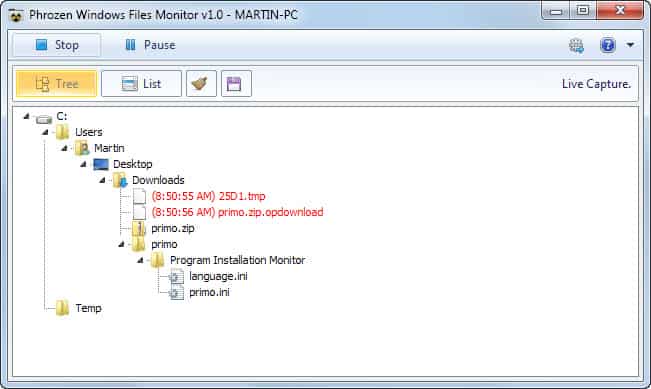

What we can see from this event ID 4663 is that itadmin opened the file “Editing this file.txt” in notepad, and we can assume that this file got changed. You can tell when a file got opened, and what process opened that file.
#WINDOWS FILE MONITOR WINDOWS#
In Windows File Auditing, you don’t know if the file got changed or not.
#WINDOWS FILE MONITOR HOW TO#
In the above screenshot, the itadmin user read the file “test – Copy.txt.” How to Track Who Changed a with Windows File Auditing ID 4663 means that an “Attempt was made to access an object.” You will see a success or failure message as part of the event, the name of the file or object, as well as the user and process that made the access attempt. Every Windows Event Log entry has an event ID, which describes what happened during that event. How to Track Who Read a File on Windows File Serverįinding who opened a file in the Windows audit is straightforward. Read on to learn more about different auditing situations including who read, edited or deleted a given file. Once you have enabled the Auditing GPO and set the file/folder auditing, you will see audit events in the Security Event Log in Windows Event Viewer.īut what does that information mean to an IR team that is trying to figure out what happened during the latest cyberattack? Let’s dig into what these event log messages actually tell us.

*I created a new GPO called “File Auditing” for the purposes of this example. In the right-click menu, select edit to go to the Group Policy Editor.
#WINDOWS FILE MONITOR UPDATE#
Right click on the Group Policy you want to update or create a new GPO for file auditing. How to Enable Windows File System Auditing Step 1: Enable Audit Policyįirst, go to the Domain Controller (DC) and update the Group Policy (GPO) to enable file auditing. A comprehensive file analysis log will show you what data an attacker or malicious insider tried or succeeded in accessing and stealing.

File analysis processes and normalizes the raw file audit data so you can use the information easier. This kind of insight requires a complete file system auditing system.įile system auditing is a requirement for any modern data security strategy, but file analysis is the better alternative. When you experience a cyberattack – it’s no longer an if – you have to be able to pinpoint exactly what the attacker viewed, changed, or stole. Why is Windows File System Auditing Important? Read on to learn more about file system auditing on Windows, and why you will need an alternative solution to get usable file audit data. Windows file system auditing is an important tool to keep in your cybersecurity forensics toolbox.


 0 kommentar(er)
0 kommentar(er)
